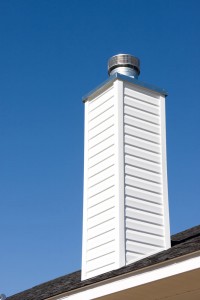A fire in the fireplace is a source of warmth and comfort, but it also creates residue that can build up within the venting system. The National Fire Protection Association And Chimney Safety Institute of America recommend annual inspections of chimneys. Since 2000, chimney inspections have been classified into one of three levels.

Each level of inspection covers particular items based on the appliance and its venting system. Annual inspection ensures that residue does not reach levels that can start a chimney fire or block the venting system. Annual inspection is recommended even if the fireplace is not used regularly because birds or other animals may make their homes in the chimney, leaving behind flammable materials.
Level 1 inspection is the minimum requirement for homes in which the past level of use will be maintained. The chimney sweep examines the readily accessible sections of the chimney and the interior, exterior, and accessible areas of the fireplace or stove and chimney connection. The sweep also verifies that the chimney is free of combustible deposits and obstructions.
If a change is made to the appliance or chimney, Level 2 inspection becomes necessary. This includes all aspects of Level 1 inspection and the accessible areas of the exterior and interior of the chimney portion including the basement, crawl space, and attic. Combustible deposits in accessible locations will be cleared and the sweep will conduct a visual inspection of internal joints and surfaces of chimney flue liners.
A Level 3 inspection includes each aspect of Level 1 and 2 inspections and the removal of certain chimney or building components as necessary. This provides access to areas being inspected and may be necessary to determine the condition of the system. The interior chimney wall or the chimney crown may need to be removed to conduct a Level 3 inspection.
